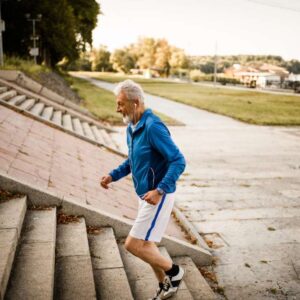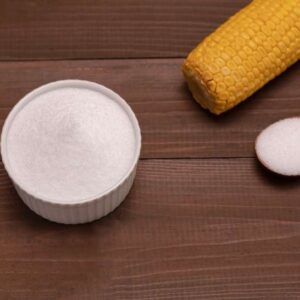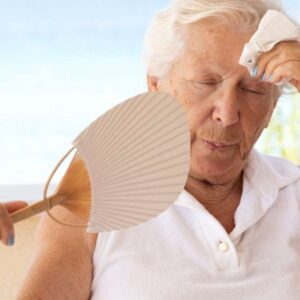
ONE Change Slashes Risk of NINE Cancers
It’s one little word. But the fear it strikes in your heart is FAR from little.
A cancer diagnosis is downright terrifying.
But ONE simple change you can make starting TODAY could help you dodge a diagnosis in your FUTURE.
In fact, new research reveals this change can significantly SLASH the risk of developing NINE types of cancer.
A compelling new study published in the British Journal of Sports Medicine suggests that regularly moving more could have MAJOR cancer-fighting benefits.
The research found men with high levels of good cardiorespiratory fitness in early adulthood had a remarkably lower risk of being diagnosed down the road with cancers of the head, neck, lungs, kidneys, and gastrointestinal systems.
At the start of the study, treadmill tests were used to check the men’s cardiovascular health and aerobic ability. Volunteers with the highest VO2 max numbers (a sign of cardiorespiratory fitness) were considered very fit.
These guys were the fittest and could work out the longest before reaching exhaustion.
Over the next few decades, the researchers kept track of which men developed cancer.
The results were clear. The participants who were fittest in their 20s were FAR less likely to develop head, neck, lung, kidney, or digestive tract cancer later in life.
Now, if you’re no longer a young whippersnapper you may think, “Too late now, that ship has sailed.”
But here’s the thing…
Even if you didn’t have optimal fitness as a young adult, increasing your activity NOW can still make a significant difference.
Plenty of research shows that starting an exercise routine at any age improves cardiovascular health, strength, endurance, and respiratory capacity.
Plus, previous studies link increased physical activity to reduced cancer risk throughout adulthood.
It’s never too late to pump up your fitness level and reap the cancer-fighting benefits. Any physical activity you do now to work up a sweat will pay off for your long-term health.
So, no matter if you’re 22 or 82, lace up those sneakers and get moving TODAY.
Brisk walking, swimming, cycling, and other aerobic exercises help boost VO2 max to forge a healthy heart.
Here are some suggestions to get you started…
- Go for brisk walks outside or march in place at home. Start slow and work up to 30–60 minutes most days.
- Try low-impact aerobics classes at your local gym or community center. Water aerobics are gentle on joints.
- Swim laps at the pool for cardio conditioning. Use floats if needed.
- Cycle on a stationary bike or a real one around the neighborhood. Recumbent bikes are a comfy way to reap those biking benefits.
- Lift light weights or use resistance bands to build strength. Focus on the major muscle groups.
- Stretch to improve flexibility. Yoga and tai chi are excellent options.
- Chair exercises allow a great workout while sitting. Squats, leg lifts, and arm movements get your heart pumping.
- Dance to music you enjoy to burn calories AND boost your mood.
- Garden, mow the lawn, sweep, and do other active chores around the house.
The key is finding activities you enjoy and can stick with long-term. Build up your activity levels slowly so you don’t overdo it.
Remember, regardless of age, starting to exercise now can still help reduce your cancer risk and keep you healthy from head to toe.
P.S. THIS 30-second trick FIGHTS heart failure doesn’t cost a penny and has zero side effects.
Source:
Onerup A, et al., “Associations between cardiorespiratory fitness in youth and the incidence of site-specific cancer in men: a cohort study with register linkage,” British Journal of Sports Medicine 2023;57:1248-1256.
Written By Dr. Scott Olson, ND
Nearly 25 years ago, failed mainstream medical treatments left Dr. Olson in constant pain – and his health in ruins. And that’s when he did something REVOLUTIONARY. He began his career in medicine – and dedicated his life to uncovering the true, underlying causes of disease.
Through his innovative medical practices in Tennessee and Colorado, Dr. Olson has helped cure countless seniors from across America of arthritis… heart disease… diabetes… and even cancer. All without risky prescription drugs or painful surgeries.
View More Free Articles
A New Reason to Ditch Processed Junk
If you’ve ever walked the inside aisles of your local grocery store and thought, “This is all just junk,” your instincts were spot on. A new study published in the journal Thorax just added another red flag to the list of dangers linked to ultra-processed food—a 41 percent higher risk of lung cancer. That’s right....
When Being Winded on Stairs Is Serious (And When It Isn’t)
I had an athlete visit me recently because he experienced shortness of breath while climbing stairs. He is in great shape, so he was worried about what it might mean. “Doc,” he said, “I run five miles three times a week. Why am I huffing and puffing after two flights of stairs?” His concern is...
Study EXPOSES Hidden Danger Lurking in Your Car
We think of our homes and cars as safe havens. But according to a startling new study, they may be flooding your lungs with microscopic plastic particles—every single day. Researchers in France recently found that adults inhale an average of 68,000 microplastic particles daily from indoor air alone. To put that in perspective, that’s about...
Mailbag: Is Modern Food Making You Snore?
“What can cause snoring, and is there a way to correct this issue?” —Seeking Silence Hi Seeking, Snoring happens when the soft tissues in your throat relax and vibrate as air passes through during sleep. While several factors can cause snoring—from sleep position to nasal congestion—I want to share one trigger that might surprise you....
Simple Food Swap SLASHES Dementia Risk 28%
Let’s be honest… who would jump at the chance to cut their dementia risk by 28 percent. And no, you don’t need to run marathons, survive on broccoli, or learn to play the zither (whatever that is) to make it happen. All it takes is one easy swap—something that’s probably already in your refrigerator. Researchers...
This SMART Floss Exposes Hidden Health Danger
Scientists have created dental floss that doesn’t just clean between your teeth—it also tracks your stress while you’re flossing. Now, I know what you’re thinking… “Great—now even flossing is going to stress me out by telling me how stressed I am.” But this fascinating new tool from Tufts University could be a game-changer for understanding...
Is This "Safe" Sweetener Damaging Your Brain?
The headlines are alarming… “Popular Sugar Substitute Linked to Brain Cell Damage” and “Erythritol Could Damage Critical Brain Barrier” are just two of the dozens I’ve spotted recently. But before you toss every sugar-free product in your pantry, let’s take a closer look at what this study actually shows—and what it doesn’t. The latest research...
This Summer Threat Could SPIKE Your Blood Sugar
Picture this… It’s another scorching hot summer day. You crank up the air conditioning while watching the weather forecast, which predicts yet another “record-breaking” heat wave. It’s starting to feel like just another miserably uncomfortable summer. But what you might not realize is that—if you have diabetes—those rising temps could do far more damage to...
Move Over Yogurt—5 Foods That Pack MORE Probiotics
Let’s talk about your gut. The microbiome is the collection of trillions of bacteria and other tiny organisms that live in and on your body—especially in your gut—and help keep you healthy. I’ve written often about how vital it is to maintain a healthy microbiome. And you might have dutifully added yogurt to your shopping...
Is Your Heart Older Than YOU?
Maybe you feel young for your age. Good energy, decent sleep, eating your veggies. But what if I told you your heart might be a decade older than the rest of you? That’s exactly what researchers at Northwestern University found in a new study published in JAMA Cardiology. The average American woman’s heart is about...









